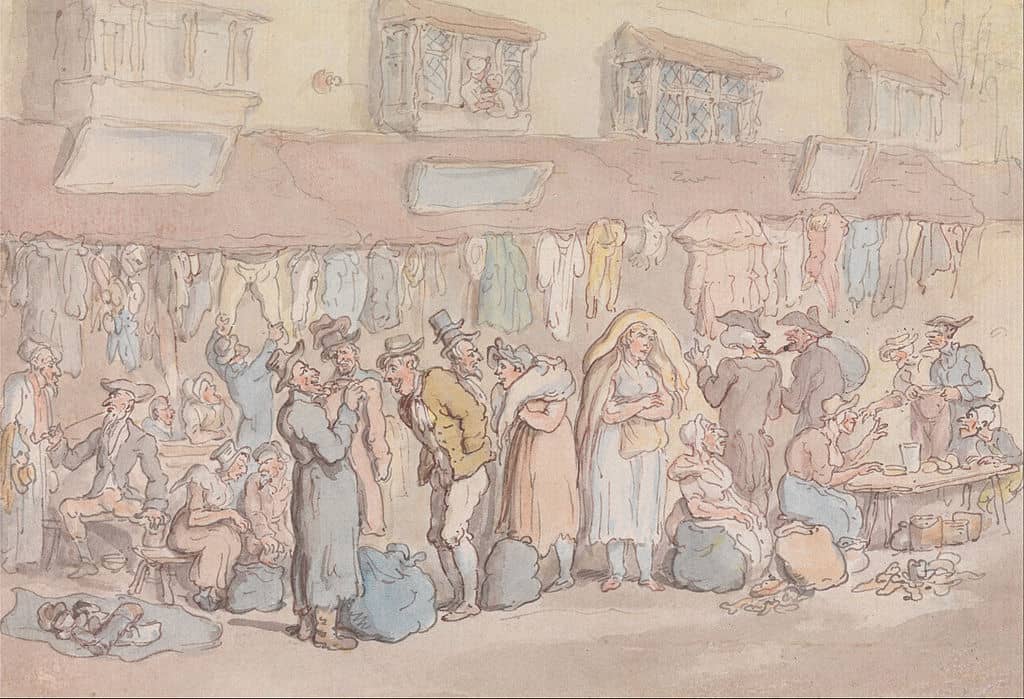RATHER unimaginatively, the Middlesex Street Estate is named after the street bearing the same name that runs along its eastern boundary.
Middlesex Street is the ancient byway marking the point where the City of London finishes and the East End begins. This is a fact not missed by the noted architectural boffin Sir Nicholas Pevsner, who rather disparagingly remarks that “the buildings do not let you forget this”.
Pevsner devoted much of his professional life to compiling his considerable architectural reflections in his voluminous work The Buildings of England.
In his edition covering the City of London, he is on record as being clearly unimpressed with the architectural merits of the Middlesex Street Estate itself, which he remarks as being “aggressive,” and “very hard and very urban, even for the standards of the time”.
This is perhaps a harsh assessment, although in fairness Pevsner was certainly no fan of 1960s Brutalist architecture.
It might require some stretch of the imagination, but in the Middle Ages, what is today known as Middlesex Street was a rather pleasant, rural, tree-lined thoroughfare known as Hogge Lane, most probably because of the pigs being fattened up in the surrounding fields to feed Londoners. Several large country houses owned by prominent citizens could be found in the immediate vicinity.
Later, Ryther’s famous map of 1608 records a name change, with Hogge Lane becoming Peticote Lane (with the spelling later being standardised to ‘Petticoat’) as the area had become known for merchants selling second-hand clothes.
The street and surrounding area became increasingly developed and urbanised throughout the 17th century, and this link with the buying and selling of clothing has persisted for over 400 years, with Petticoat Lane Market now considered as one of the most famous in London.

The market was certainly very well established by Victorian times, although it’s operation on Sunday mornings periodically irked pious officials, resulting in several attempts to disrupt the market’s operation.
There are amusing reports of fire engines and buses occasionally being driven through the crowds visiting the market to deter their sinful Sunday shopping. It was not until 1936 that Petticoat Lane Market became properly licensed by the passing of an Act of Parliament.
Around 1830 the prudish authorities oversaw one final revision of the street’s name. Thinking it most unseemly to have a thoroughfare named after an item of women’s underwear, a decision was taken to rename Petticoat Lane as Middlesex Street.
The rationale for this choice of new name was solid enough given that, at the time, Petticoat Lane marked the boundary between the City of London and the start of the County of Middlesex.
However, within just a few short decades boundary changes brought the East End into the newly formed County of London, with Middlesex loosing much of it’s territory in the process. Middlesex was formally abolished as an administrative county in 1965 when the London Government Act came into force.
Despite Petticoat Lane becoming Middlesex Street nearly two centuries ago, there’s something quite satisfying about the fact that stubborn Londoners saw to it that their famous Sunday market would continue to use the name it had gone by since the early 17th century.
This remains the case today, and I have often found myself smirking when I encounter confused tourists trying to locate the elusive, non-existent Petticoat Lane on Google Maps on their smartphones.
So, I live by a street that has two names: one official, one not, yet both having the distinguishing feature of having been used for a long, long time.
I reckon the moment has arrived to take some steps towards formally rehabilitating the name ‘Petticoat Lane’, given that most locals have seemingly never stopped referring to the street as such anyway.
Don’t get me wrong, I acknowledge that changing street names is a costly and complex business and I am proposing nothing so grandiose.
Formally changing the name of a street presumably requires the amendment of a multitude of cartographic databases and the Post Office gazetteer, not to mention the costs involved for the numerous businesses located along Middlesex Street all having to change their stationery. That would be silly and impractical.
However, it would surely be a relatively straightforward and inexpensive matter for the City of London Corporation and the London Borough of Tower Hamlets to mount a few new street signs saying, “Middlesex Street, Formerly Known as Petticoat Lane”.
There you go, with just a few hundred quid spent between them, the two local authorities could help take a decisive step towards better acknowledgement of the history, culture and heritage of this very old street… and maybe even help a few lost visitors to find their way to the market on a Sunday morning.
 Ian McPherson is a City of London Guide who lives on the Middlesex Street Estate with his partner and young daughter.
Ian McPherson is a City of London Guide who lives on the Middlesex Street Estate with his partner and young daughter.
Cover image by yisris (Creative Commons).







